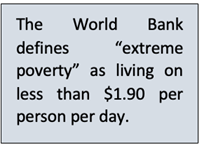Wednesday, 20th April 2022
Corporate Defence Mechanisms to prevent Hostile Takeovers
In News
Tesla CEO Elon Musk’s recent bid to acquire Twitter was partially prevented with Twitter deploying the ‘poison pill’ mechanism.
About the News
- Publicly listed companies across the globe often witness threats of hostile takeovers, which take place through a back-door accumulation of shares; in other words, acquiring sizeable shares from the open market than from the management.
- Thus, the ‘poison pill’ mechanism was deployed by Twitter to dilute its shares so that activist investors (in this case Mr. Musk) looking for hostile take-overs will incur a massive expenditure.
- As part of the mechanism, Twitter put forth a shareholder rights plan that would be triggered if an entity acquires a stake of 15% or more.
- The plan would allow existing shareholders, excluding the acquiring entity- Mr Musk in this case, to purchase additional shares at a discounted rate, making it difficult for the acquirer to establish a majority stake in the company.
- The move would additionally reduce the likelihood of an entity acquiring control of the company without paying the other shareholders an appropriate premium.
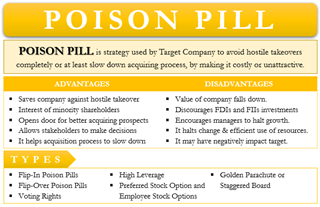
With time, the listed companies have able to come up with several other defence mechanisms to prevent such takeovers. Some of them include:
- Greenmail Defense: This involves paying the activist investors to go away and stop threatening the company with hostile takeover.
- It involves the target company repurchasing its own shares at a premium and in a quantity enough to prevent a hostile takeover.
- Crown jewel defence: The mechanism involves the target company spinning-off its crown jewel unit, or its most valued asset, to make the acquisition less desirable for the acquirer. The asset could be the unit that is most profitable unit in the company, or is important for future profitability, or produces the flagship product of the company.
- Pac-man defence: This mechanism prevents a hostile takeover by initiating a reverse takeover. It involves the target company making an offer to the acquire the company that commenced the takeover bid.
- The target company could make use of its ‘war chest’ or securing finances from outside for the reverse takeover bid.
- White Knight defence: In case a company’s board finds itself in a situation that it cannot prevent a hostile takeover, it seeks a more accommodative and cordial firm to acquire a controlling stake from the hostile acquirer.
- The ‘White Knight’ agrees to restructure the company adhering largely to the desires of the target company’s board, also providing a fair consideration.



Source:
- Explained | ‘Poison pill’ and other corporate defence mechanisms to prevent hostile takeovers
- How Can a Company Resist a Hostile Takeover?
Image source:
UGC norms for foreign university collaboration
In News
In an attempt to allow Indian and foreign higher education institutions to offer joint or dual degrees and twinning programmes, the University Grants Commission (UGC) has recently approved the relevant regulations.
What are the major highlights?
- Collaboration: Any Indian institution accredited by the National Assessment and Accreditation Council (NAAC) with a minimum score of 3.01 or in the top 100 in the university category of the National Institutional Ranking Framework (NIRF) or an Institution of Eminence can collaborate with any foreign institution in the top 1000 of the Times Higher Education or QS World rankings.
- Regulation: The amendments curb the regulator’s supervisory role in facilitating such collaborations. Indian universities that meet a minimum academic standard will not need UGC’s permission to offer such programmes.
- Professional programmes: In the case of programmes in disciplines such as engineering, medicine and law, the approval of statutory councils or bodies like the AICTE, National Medical Commission and Bar Council of India will still be needed.
- Course credit: Students enrolling in the jointly-offered programmes will be able to earn a specific percentage of the course credit, depending on the type of programme, at a foreign university.
- Limitation: These norms under the UGC regulations, 2022, will not be applicable to programmes offered in online and open distance learning (ODL) mode.
- Dual degrees: Under dual degree programmes — both the Indian and foreign institutions will give separate and simultaneous degrees for a course of the same discipline, and at the same level by the Indian and foreign institution.
- Foreign collaborative courses: Students enrolling for these programmes will have to go abroad to earn credits, but they will not have to seek admission separately while doing so.
- Cross discipline: This shall not, in any way, be construed as two-degree programmes in separate disciplines or subject areas at two different levels.
- Twinning arrangement: A student can study a programme partly in India and partly in a foreign university, but the diploma or degree will be awarded just by the Indian university.
- Curriculum: For joint degree programme the curriculum will be designed jointly by the collaborating institutions, and the degree is awarded by the Indian university. The collaborating foreign university, on the other hand, will offer a certificate bearing the logo of both institutions upon completing the programme.
Why is it important?
- Easier collaborations: It will make it easier for Indian higher education institutions to collaborate with foreign universities.
- Flexibility: The UGC amendments, once notified will allow greater flexibility and reduces the UGC’s supervisory role.
- Lesser time: The new set-up effectively ends the delays due to earlier norms of UGC satisfaction for collaboration and thus ends the extensive vetting process.
- Greater autonomy: The new amendments obviate the need for institutes to seek the UGC’s nod as long as the Indian partner institution satisfies the relevant eligibility criteria.
Sources:
World Homoeopathic Day
On April 20, 1755 famous German physician Dr Christian Friedrich Samuel Hahnemann was born. World Homoeopathic Day is celebrated on April 10 every year to commemorate the birth of the father of homoeopathic medicine, Dr. Samuel Hahnemann. Homoeopathy as the world literally means is ‘Homo' means similar, ‘eo' means symptoms of the patient and ‘pathy' means suffering ; originally a German word and coined Dr. Hahnemann. Homoeopathy is based on i.e ‘likes treats like'. As per this concept, if there is a substance which produces a set of symptoms in an individual when given to the same patient in a more refined, diluted and dynamised form gets rid of the disease and the similar symptoms that patient is suffering from. The other characteristic of homoeopathic medicines is that though they are made from different sources like vegetable kingdom, minerals, chemicals, compounds, healthy tissues, infected tissues and energies, the source is always in the form of the existing substances available in nature. The better part of this system is that there are no side effects of the medicine.
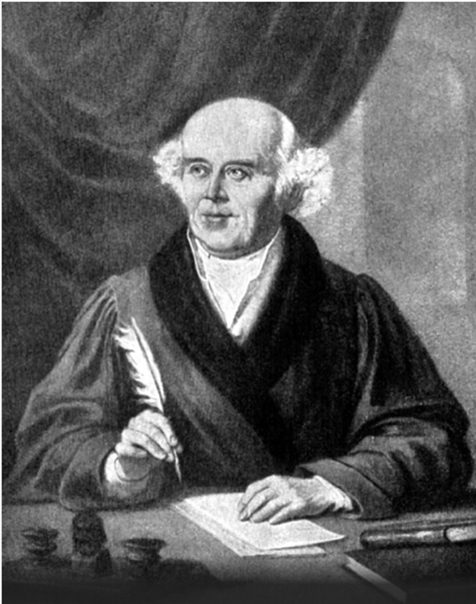
Source:
Denotified Tribes
In News
A Parliamentary standing committee on Social Justice and Empowerment report, has criticised the functioning of the development programme for de-notified, nomadic, and semi-nomadic tribes.
Who are DNTs?
- The term 'De-notified Tribes' stands for all those communities which were once notified under the Criminal Tribes Acts, enforced by the British Raj between l87l and I947.
- These Acts were repealed by the Independent lndian Government on 31 August l952, and these communities were "De-Notified".
- After denotification in 1952, about 200 communities were included in Scheduled Tribe (ST), Scheduled Caste (SC) and Other Backward Caste lists because they come from diverse social backgrounds.
- 31 August is celebrated as Vimukta Jati day in India by the de-notified tribal communities.
- While they mainly come from nomadic communities, these communities are not homogeneous with few castes constituting the rest.
- All nomadic tribes (NTs) are not de-notified tribes (DNTs), but all DNTs are NTs.
- While the number of Denotified Tribes is about 150, the population of Nomadic Tribes consists of about 500 different communities. Broadly, we have three types of nomadic communities:
- Hunter/trappers of birds and animals, gamer, etc, such as Konda Reddis, Chenchus, Kadar and Cholanayakas, Kakkipakkis,
- Pastoral communities, such as Pardis, Van Gujjars, Banjaras, Bhils, Minas, Kurabas, Kurumas Dangers, Madhuras, etc.
- Peripatetic groups of peddlers, itinerant, fortune tellers, storytellers, acrobats, dancers and dramatists, such as Lohars, Kaikaris (basket maker) Kewats (jute weavers), Yerakalas (basket maker), Pitchakuntla, Jogis, etc.
- These communities constitute 10% of India's population.
- Many of them are religiously mixed communities as the same community practices Hindu, Muslim, and Sikh faiths.
Problems faced by DNTs
Although the postcolonial state replaced the CTA with the Habitual Offenders Act, 1952, the DNT communities continue to be criminalised by both the police and wider society. Some of the problems faced by them are:
- The issue of civil rights: The NT and DNT communities are denied basic civil rights guaranteed by the Constitution for want of proof of permanent address.
- Their children are denied education.
- They are denied safe drinking water, the right to work, the right to vote and many other civil rights.
- The legacy stigmatization: The colonial state imposed criminal stigma on diverse nomadic communities, which has continued to haunt them till date.
- The rigid belief system of the people in rural hinterland prevents them to accept DNTs without the stigma that was associated with their identity since colonial times.
- The issue of categorization: After repealing the CTA in 1952, there was serious ambiguity about classifying DNTs under the reserved category.
- However, there are few states like Karnataka where several DNT communities in the state were included in the SC list, thus providing them with developmental opportunities.
- Issue of DNTs in an urban setting: A study has shown that urban planning in India has been neglectful of DNTs who resort to living on sides of roads in makeshift tents where they are vulnerable to exploitation and harassment.
- Most of them end up in police custody purely based on prejudices or stereotypes.
- Development Issues: Since DNTs have never had access to private land or home ownership, development programs are hard to reach them.
- From the early 21st century, central governments made some attempts to understand the state of NT and DNT communities and bring them under one administrative category. But despite many efforts, there has been lukewarm progress on this front.
Findings of the standing committee report:
- The scheme for economic empowerment of DNT communities formulated to provide coaching, health insurance, facilitate livelihood and financial assistance for construction of homes for the members of DNT, could not spend even a single rupee in 2021-22 and the budgetary allocation has been reduced for 2022-23.
- The Department has already delayed in formulation of the Scheme for welfare of Denotified, Nomadic and Semi Nomadic communities.
- At present 269 such Denotified, Nomadic and Semi-Nomadic communities are specified, and a survey is now in under process to place these castes in SC, ST and BC categories.
- Department has not been able to take any decision till date. So, the committee has recommended that the Department should take necessary action in this regard so that these castes are placed either under SCs, STs or BCs and avail benefits.
Steps taken for the development of DNTs
- A National Commission for De-notified, Nomadic and Semi-Nomadic Tribes (NCDNT) called the Renke commission report estimated their population at around 10.74 crore based on Census 2001.
- Another NCDNT under chairperson Bhiku Ramji Idate recommended that the government should provide strong legal protections and constitutional safeguards, including the extension of the Protection of Atrocities Act to the NT/ DNT/ SNT communities by creating a separate Third schedule as Scheduled De-notified, Nomadic and Semi-Nomadic Tribes.
- A Development and Welfare Board for De-Notified, Nomadic and Semi-Nomadic Communities (DWBDNCs) had been constituted in 2019.
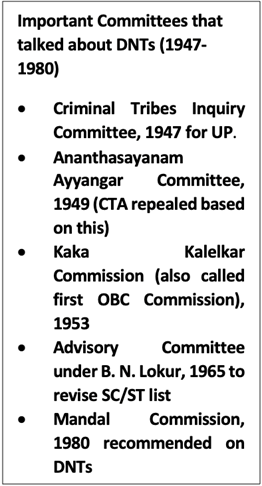
Various schemes for development of DNTs:
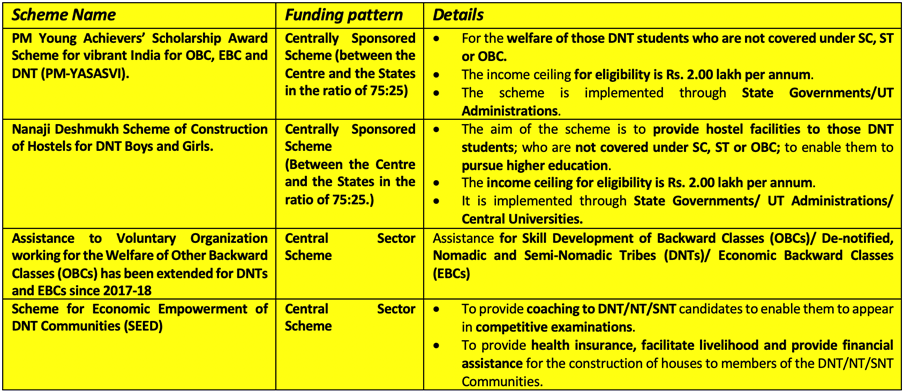
How to overcome the challenges faced by the DNTs?
- The eligibility income limit should be reviewed in view of the rising inflation so that the needy students are not deprived of the Schemes.
- The government may set achievable targets for the scheme implementation in terms of goals rather than money spent. There may be set a grading system to review the performance of states under the schemes for upliftment of DNTs.
- Due to pandemic, people belonging to DNT may not have had access to benefits accorded to them. Government may take help of NGOs, civil service groups, local community leaders to educate the people of the ways to access such benefits.
- The budget allocation may be reviewed considering the economic distress caused to the marginalised sections.
- Policy review should be undertaken to ascertain the reasons due to which the growth of DNTs has been sluggish.
Conclusion: DNTs have been a historically wronged section of the society and need utmost support from all sections of the society including the government to overcome the challenges faced by them. The government needs to form policies centred around the development of DNTs and involve them in the growth of the country.
Question: Discuss the challenges faced by the Denotified tribes in India and the steps need to overcome these challenges.
Sources:
- Explained: State of denotified tribes, and why House panel is critical about a programme for their development
- 31st STANDING COMMITTEE ON SOCIAL JUSTICE ANDEMPOWERMENT (2021-22)
- Denotified, Nomadic and Semi-Nomadic Communities
- Welfare Schemes for Denotified Communities
- Unveiling the World of the Nomadic Tribes and Denotified Tribes: An Introduction
- THE REPORT OF THE ADVISORY COMMITTEE ON THE REVISION OF THE LISTS OF SCHEDULED CASTES AND SCHEDULED TRIBES
- A National Commission That Has Dismally Failed the Denotified Tribes
- Denotified nomadic tribes may come under SC/ST Act
- National Commission For De-Notified And Nomadic Tribes
Veer Kunwar Singh
This is image of Veer Kunwar Singh, a key figure in the 1857 Indian rebellion against the British East India Company. Veer Kunwar Singh has emerged as a talking point in Bihar politics. Belonging to a family of the Ujjainiya clan of the Parmar Rajputs of Jagdishpur, Kunwar Singh led the fight against the British in Bihar. He was nearly 80 and his health was failing but that did not stop him from joining the fight for freedom. An expert in the art of guerilla warfare, his tactics left the British puzzled. Kunwar Singh was assisted by both his brother Babu Amar Singh and commander-in-chief Hare Krishna Singh. Some argue that the latter was the reason behind Kunwar Singh’s initial military success. On 23 April 1966, India issued a commemorative stamp to honour the freedom fighter. Bihar established the Veer Kunwar Singh University, Ara in 1992.

Sources:
‘Micro-swimmers’
- Context: Recent scientific research are aiming at moving microbots into the bloodstream to deliver drugs.
- The research has shown that it is possible to use light as a fuel to move microbots in real-body conditions with intelligent drug-delivery that is selectively sensitive to cancer cells.
- The microbots are made from the two-dimensional compound poly (heptazine imide) carbon nitride (aka PHI carbon nitride), which range from 1-10 micrometre (a micrometre is one-millionth of a metre) in size and can self-propel when energised by shining light.
- The PHI carbon nitride microparticles are photocatalytic and like in a solar cell, the incident light is converted into electrons and holes.
- These charges drive reactions in the surrounding liquid. This reaction, combined with the particle's electric field, makes the microbots (micro-swimmers) swim.
- With light, not only can the microbots be moved but their direction of motion towards a specific goal can also be controlled.
- By changing the pH of the solution or by triggering it with light, the researchers showed the drug release could be activated.

Source:
Image source:
Integrated Command and Control Centres (ICCCs)
- Context: According to the Union Ministry of Housing and Urban Affairs, of the 100 cities being developed under the Smart Cities Mission (SCM), 80 have already set up Integrated Command and Control Centres.
- ICCCs are a key component of the Smart Cities project, which aims to develop 100 citizen-friendly, self-sustainable urban settlements.
- Designed for real-time monitoring, the ICCCs were initially aimed at controlling and monitoring water and power supply, sanitation, traffic movement, integrated building management, city connectivity and Internet infrastructure.
- However, they will now also be linked to the Home Ministry’s Crime and Criminal Tracking Networks and Systems or CCTNS.
- These command centres also functioned as war rooms during Covid-19 and helped cities fight the pandemic through information dissemination, better communication, predictive analysis and by supporting effective management.

Source:
- Integrated command centres in all 100 smart cities by August 15: Puri
- Integrated Command & Control Center
Image source:
Rashtriya Gram Swaraj Abhiyan
- Context: The Cabinet Committee on Economic Affairs (CCEA) has recently approved a proposal to continue the Rashtriya Gram Swaraj Abhiyan (RGSA) till 2025-2026.
- RGSA is a scheme for improving the governance capabilities of Panchayati raj institutions launched in 2018.
- It is an umbrella scheme of the Ministry of Panchayati Raj.
- It will extend to all States and Union Territories (UTs) of the country. For the purpose of these guidelines, wherever ‘Panchayats’ are mentioned, these will include institutions of rural local government in non-Part IX areas.
- The approved scheme of RGSA will help more than 2.78 lakh rural local bodies to develop governance capabilities to deliver on SDGs through inclusive local governance with focus on optimum utilisation of available resources.
- The scheme would work towards poverty free and enhanced livelihood in villages; healthy village, child friendly village; water sufficient village; clean and green village; self-sufficient infrastructure in village; socially secured village; village with good governance; engendered development in village.

Source:
Image source:
CALM’ System
- Context: The Indian Army issued a Request for Information for the Cannister Launched Anti-Armour Loiter Ammunition (CALM) System.
- The RFI has been issued for its mechanised forces which can be used on enemy tanks and other targets in the plains and deserts of Western India as well as on high altitude areas in the Northern borders in Ladakh.
- The CALM System is a pre-loaded canister with loiter ammunition or a drone which once fired can remain aloft for a period of time over the area of operation, and when a target is sighted it can be guided down to destroy the target with the explosive payload that it carries.
- Usually, loiter ammunitions carry a camera which is nose-mounted and which can be used by the operator to see the area of operation and choose targets. These munitions also have variants which can be recovered and reused in case they are not used for any strike.
- These systems are being procured under the ‘Make in India’ and ‘Atmanirbhar Bharat’ programmes.
- In the plains and deserts, the system should be able to operate between the temperature of zero degrees Celsius to 45 degrees Celsius while in high altitude it should be able to operate between minus 15 degrees Celsius to 40 degrees Celsius.
- The CALM System had been very effectively used in the Armenia-Azerbaijan conflict in 2021.
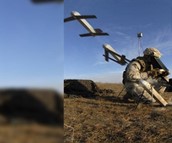
Source:
Upholding the right to repair: Indian Express
Essence: As per the authors, repairing of electronic goods is becoming either expensive or impossible due to non-publication of manuals, proprietary control over spare parts and refusal of firms to make their products compatible with those of other firms. The consumer owns the product and has the right to use, right to modify and right to repair. The right to repair would reduce the prices of repair and electronic waste and lack of it infringes the consumers “right to choose” recognised by the Consumer Protection Act, 2019.
Under the Australian Consumer Law, consumers have a limited right to repair if goods break too easily or do not work properly and have a repair café system where volunteers gather to share their repairing skills. Federal Trade Commission of the United States directed manufacturers to remedy unfair anti-competitive practice and asked them to make sure that consumers can make repairs. In UK too, manufactures are to mandatorily provide space parts. Thus, India must have a well drafted legislation mandating access to spare parts and manuals on repair to strike a balance between intellectual property and competitive laws.
Why should you read this article?
- To know the reasons for repairing of electronic goods becoming either expensive or impossible.
- To know the rationale behind the right to repair.
- To know about the legislative framework across the world which guarantees limited right to repair.
Source:
Counting all those who died of Covid: Indian Express
Essence: The editorial talks about the contradicting claims of Indian govt and those of various research reports on the excess mortality in India during covid times. Excess mortality is the difference between the number of people who died during pandemic and the number of people who were expected to have died based on historical data on mortality. It is possible that the excess deaths could have been caused due to covid, or other causes related to the pandemic/lockdown.
The government of India’s tally is based on the covid positive infection status of the persons close to the time of their death. Since many people couldn’t get themselves tested for covid, excess mortality was accepted as a global parameter to judge covid impact. The seemingly inflated data is a result of ground level surveys from morgue/crematorium from various states, claims of compensation, WHO global studies, etc. They all converge to the data that deaths were 6-8 times higher than the govt count, totaling it to 3-4 million. Sidelining the undercount, with these numbers, India would account for 1/4th of global excess mortality, exceeding the deaths in USA, Russia, Mexico, Brazil all combined.
Counting the excess deaths helps in giving compensation, it lets the authorities know the extent of impact of the pandemic, and helps the family recover from trauma, and denial of tragedy won’t let such things happen.
Why should you read this article?
- To know the need to capture accurate data on covid deaths.
- To understand the counterclaims by the government against WHO data on death toll.
Source:
Time to set price distortions right: The Hindu
Essence: The editorial focuses on reduction of distortions which have crept in due to excessive micromanagement of various sectors of economy- taxation on petroleum, electricity cost, cross subsidy in railways, etc. Reduction of cost of doing business will be a promoter of ease of doing business. If cost is high, it is a source of competitive disadvantage for growth of business, employment, and value addition.
Price distortions, subsidies, excessive taxation by government are participants in aggravating the condition of economy. Government dependence on petrol/diesel taxation keeps it out of GST. Excessive price rise and taxation has led to increase in cost of road transport. Price of electricity is high for industry/bulk consumers and low for retailers. Similarly, the cost of transport of rail cargo is higher than the passenger transport. Cross-subsidies have led to loss of Indian competitiveness of business.
What is need now is to provide quality infrastructure, land use conversion and redevelopment and less pricing distortions by the government. It will lead to durable jobs creation in India.
Why should you read this article?
- To know more about the price distortions in Indian economy.
- To understand the areas of improvement for job creation in India.
Source:
Desi Food Addressing Malnutrition
Background
According to the World Health Organization, malnutrition is defined as deficiencies, excesses, or imbalances in a person's energy and/or nutrient consumption (WHO).
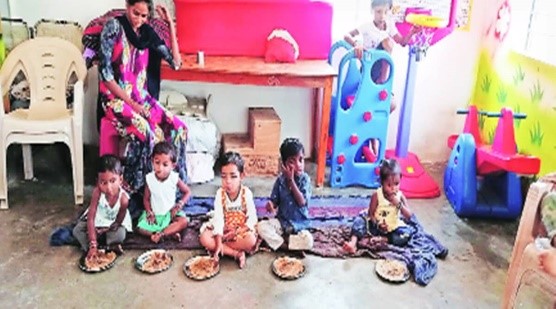
How Desi Food is Addressing Malnutrition?
- In the fight against malnutrition, Gadchiroli, a tribal-dominated area in Maharashtra, has set a national example.
- Since last October, when the district implemented a special nutrition programme for malnourished children aged six months to six years, 3,794 malnourished children (out of a total of 7,111) have recovered in the district.
- In Maharashtra, a diet plan was designed for the first time in any district to promote children's health, the same diet can be enforced across the state.
- The scheme was suspended during the Covid-19 epidemic, and the Women and Child Development (WCD) department began offering Take Home Ration (THR).
- The ration was frequently consumed by the entire household, not just the youngster who was afflicted. As a result, a new menu has been created in consultation with nutritionists.
- Vegetable khichdi, sprouts cutlet, peanut cutlet, tiranga paratha, a dry chutney made with curry leaves, Mutthe, groundnut, jaggery, and sesame laddu, and kadi patta shankarpali were among the eight nutrient-dense Maharashtrian meals to aid the children's recuperation.
- The majority of the vegetables for the event were grown in the anganwadi mini kitchen by the anganwadi personnel. Each underweight child in the programme is also given Rs 100 by the department.
- Gram panchayats are funding the entire project.
Quote: “Malnutrition can be as common in poverty as in wealth, one for the lack of food, the other for the lack of knowledge of food.”― T.K. Naliaka
Source:
Share the article
Get Latest Updates on Offers, Event dates, and free Mentorship sessions.

Get in touch with our Expert Academic Counsellors 👋
FAQs
UPSC Daily Current Affairs focuses on learning current events on a daily basis. An aspirant needs to study regular and updated information about current events, news, and relevant topics that are important for UPSC aspirants. It covers national and international affairs, government policies, socio-economic issues, science and technology advancements, and more.
UPSC Daily Current Affairs provides aspirants with a concise and comprehensive overview of the latest happenings and developments across various fields. It helps aspirants stay updated with current affairs and provides them with valuable insights and analysis, which are essential for answering questions in the UPSC examinations. It enhances their knowledge, analytical skills, and ability to connect current affairs with the UPSC syllabus.
UPSC Daily Current Affairs covers a wide range of topics, including politics, economics, science and technology, environment, social issues, governance, international relations, and more. It offers news summaries, in-depth analyses, editorials, opinion pieces, and relevant study materials. It also provides practice questions and quizzes to help aspirants test their understanding of current affairs.
Edukemy's UPSC Daily Current Affairs can be accessed through:
- UPSC Daily Current Affairs can be accessed through Current Affairs tab at the top of the Main Page of Edukemy.
- Edukemy Mobile app: The Daily Current Affairs can also be access through Edukemy Mobile App.
- Social media: Follow Edukemy’s official social media accounts or pages that provide UPSC Daily Current Affairs updates, including Facebook, Twitter, or Telegram channels.



